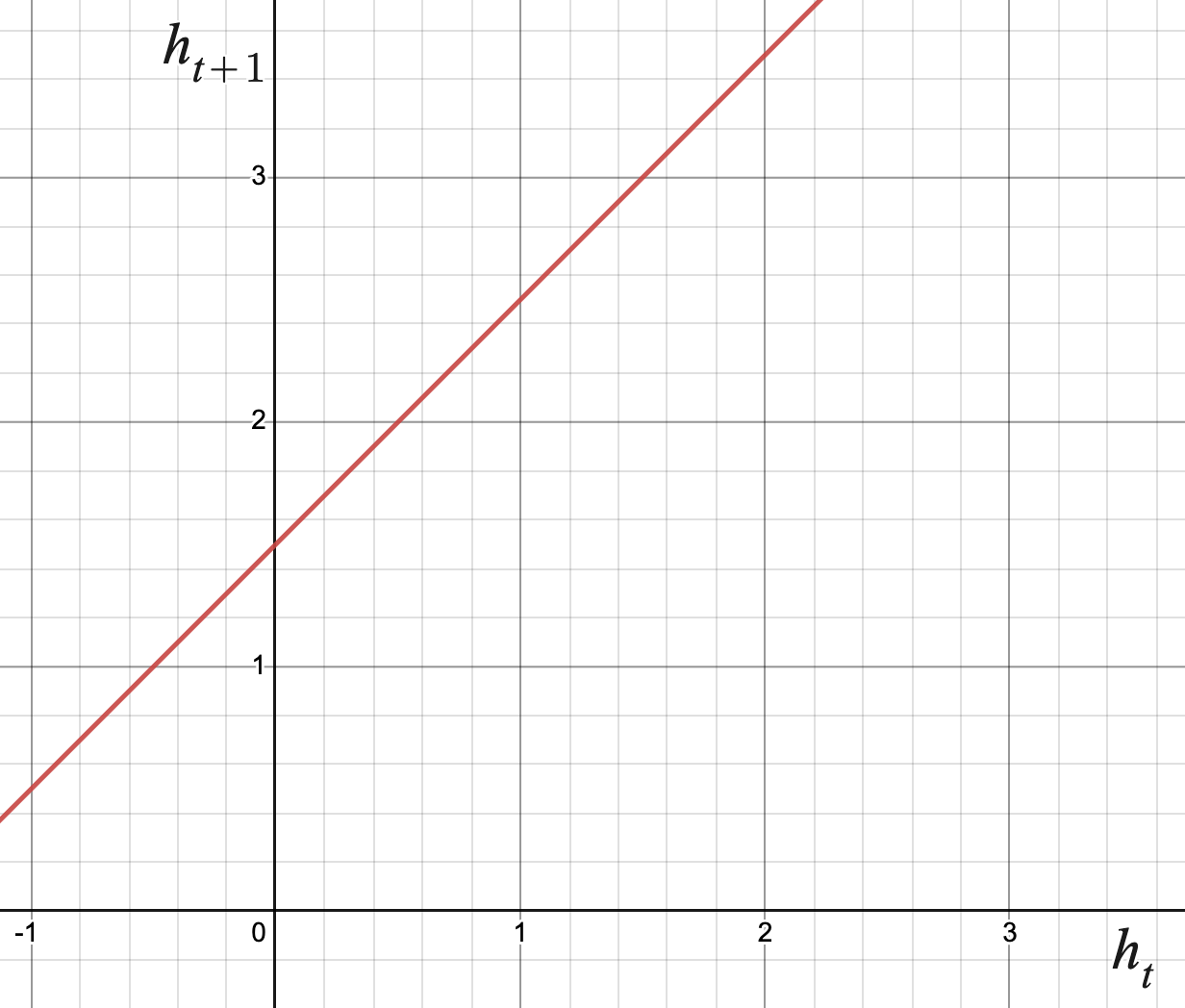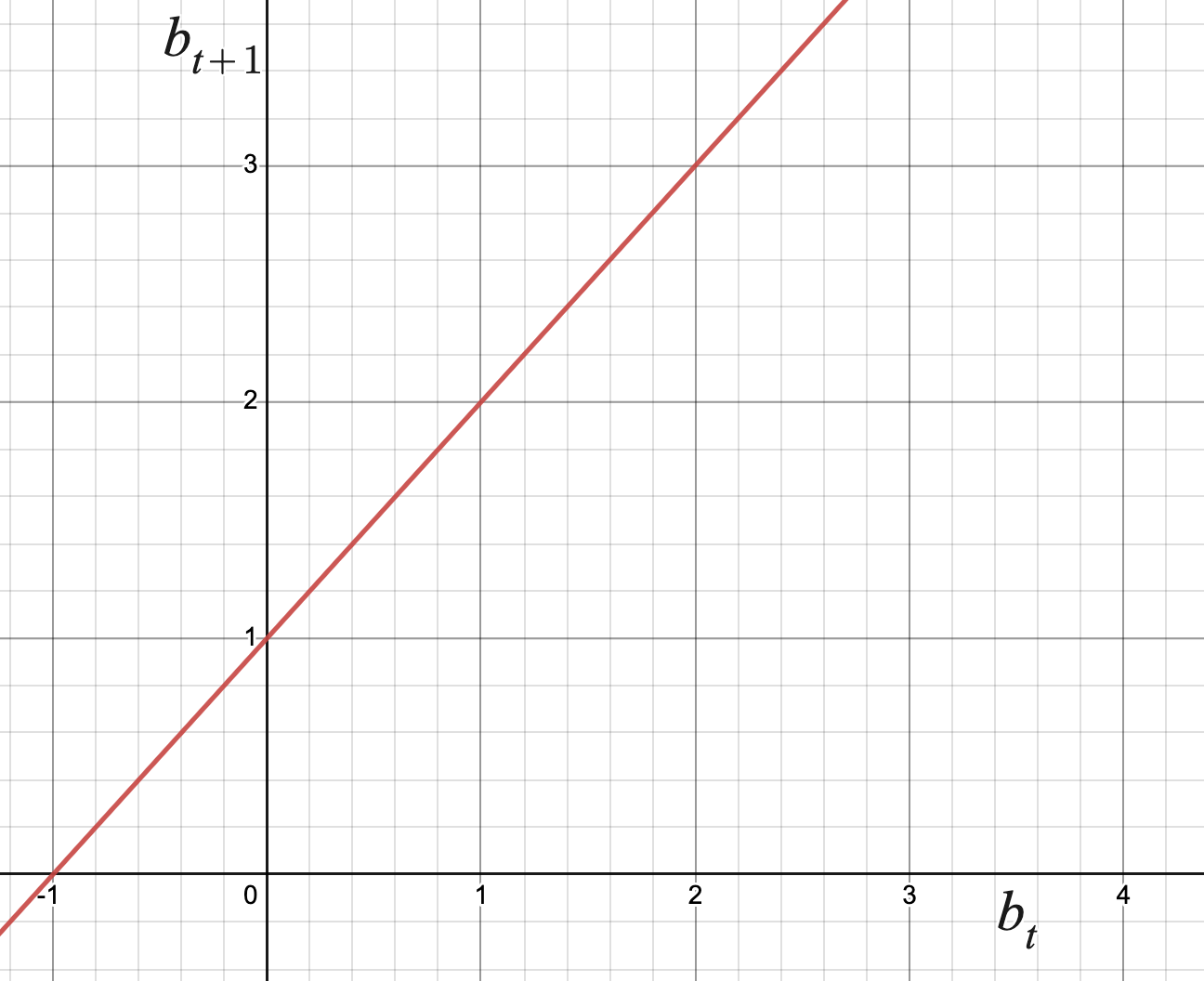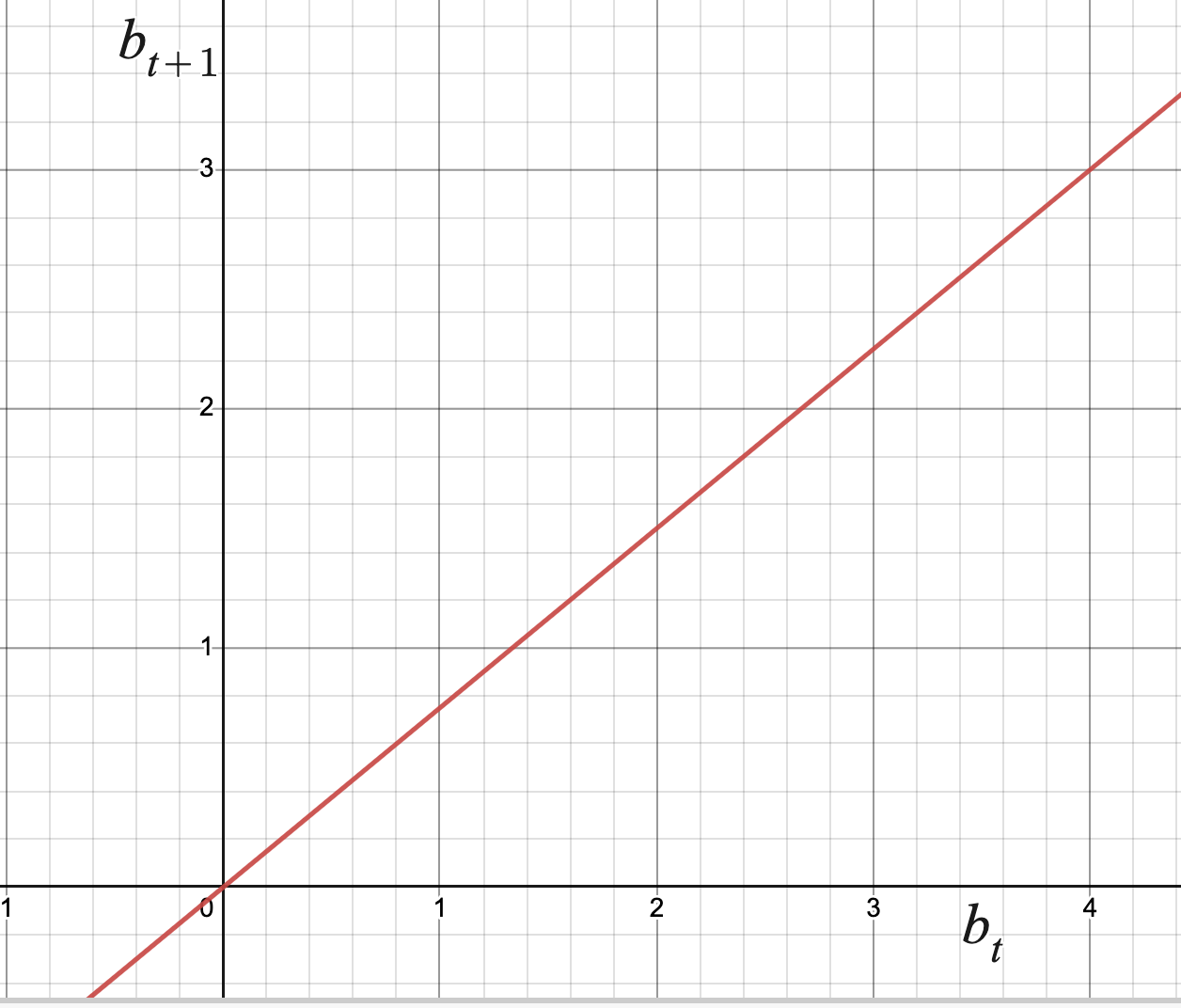Motivating Questions
- What is a discrete-time dynamical system, and how can we represent one using functions?
- How can we make predictions about a discrete-time dynamical system?
| \(t\) | \(h_t\) | \(h_{t+1}\) |
|---|---|---|
| \(0\) | \(2\) | \(3.5\) |
| \(1\) | \(3.5\) | \(5\) |
| \(2\) | \(5\) | \(6.5\) |
| \(3\) | \(6.5\) | \(8\) |


| \(t\) | \(p_t\) | \(p_{t+1}\) | \(10 \cdot 0.5^t\) |
|---|---|---|---|
| \(0\) | \(10\) | \(6\) | \(10\) |
| \(1\) | \(6\) | \(4\) | \(5\) |
| \(2\) | \(4\) | \(3\) | \(2.5\) |
| \(3\) | \(3\) | \(2.5\) | \(1.25\) |
| \(4\) | \(2.5\) | \(2.25\) | \(0.625\) |
| \(5\) | \(2.25\) | \(2.125\) | \(0.3125\) |

